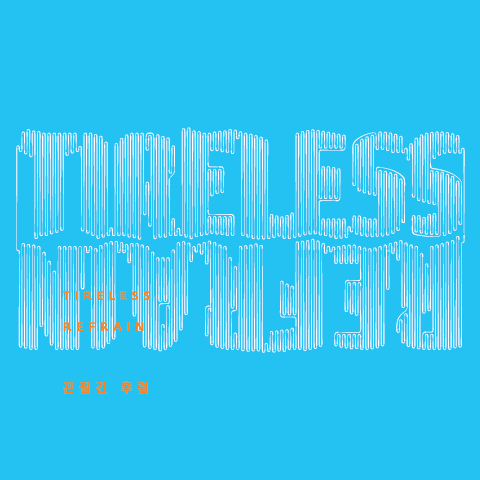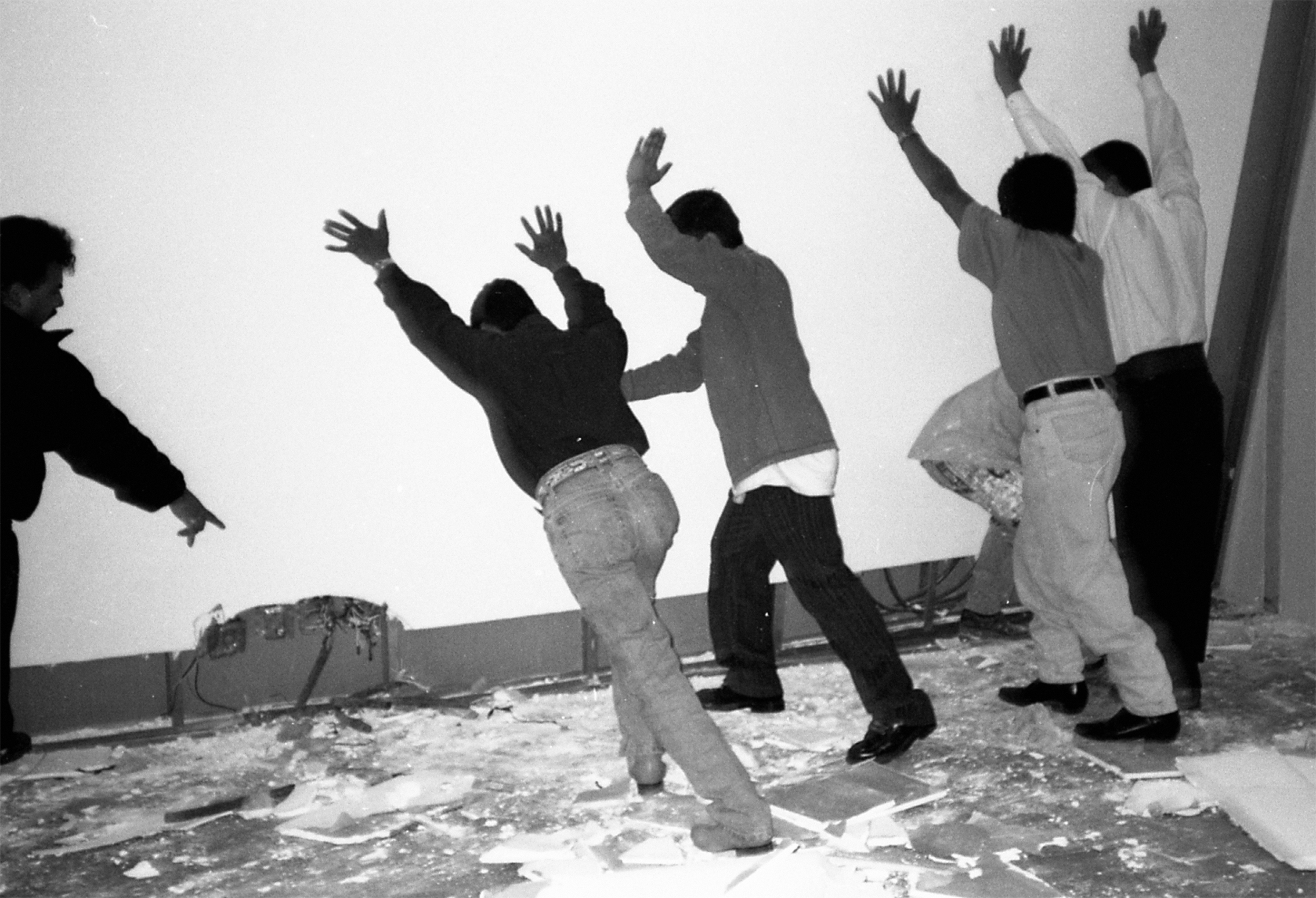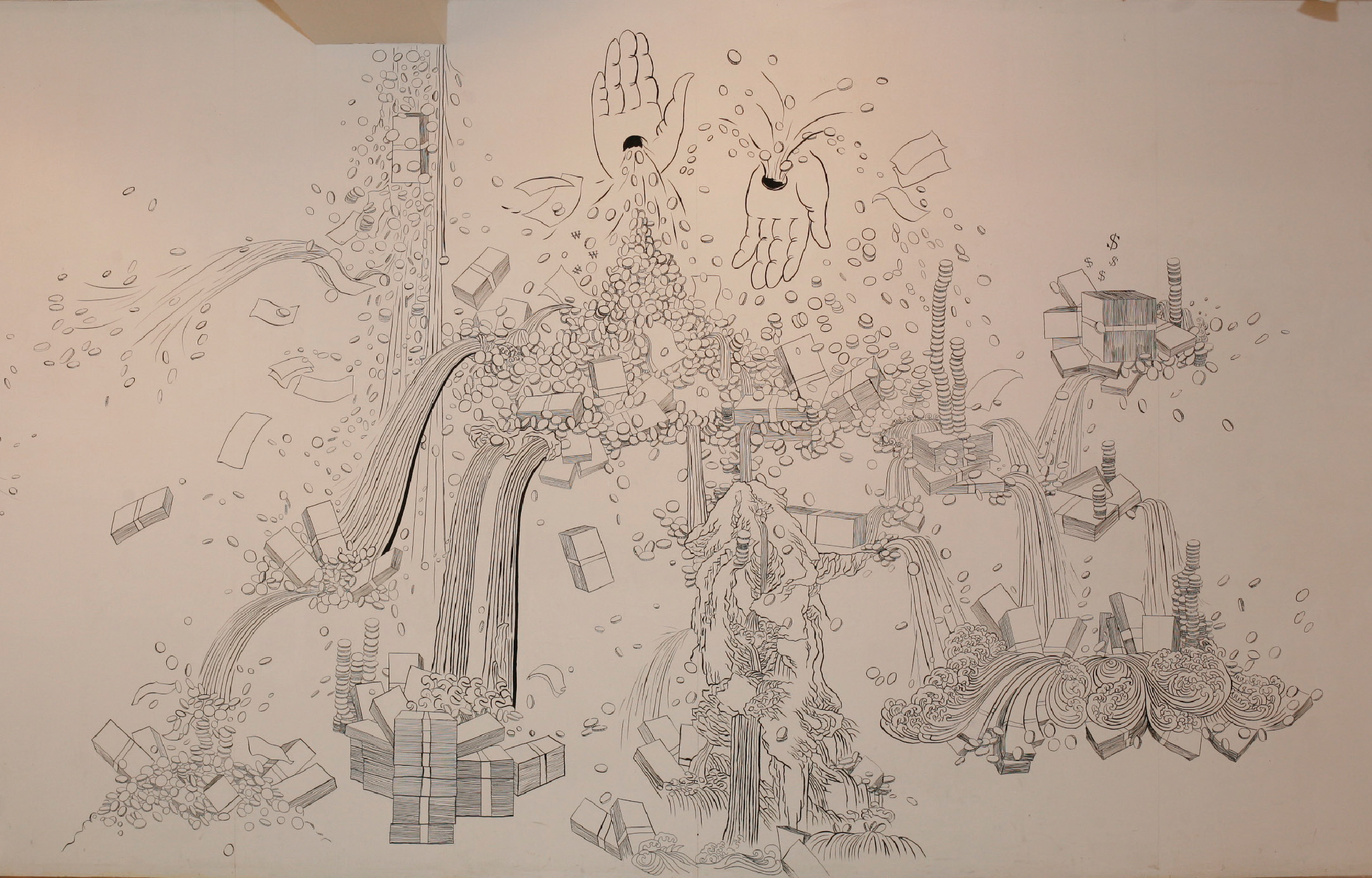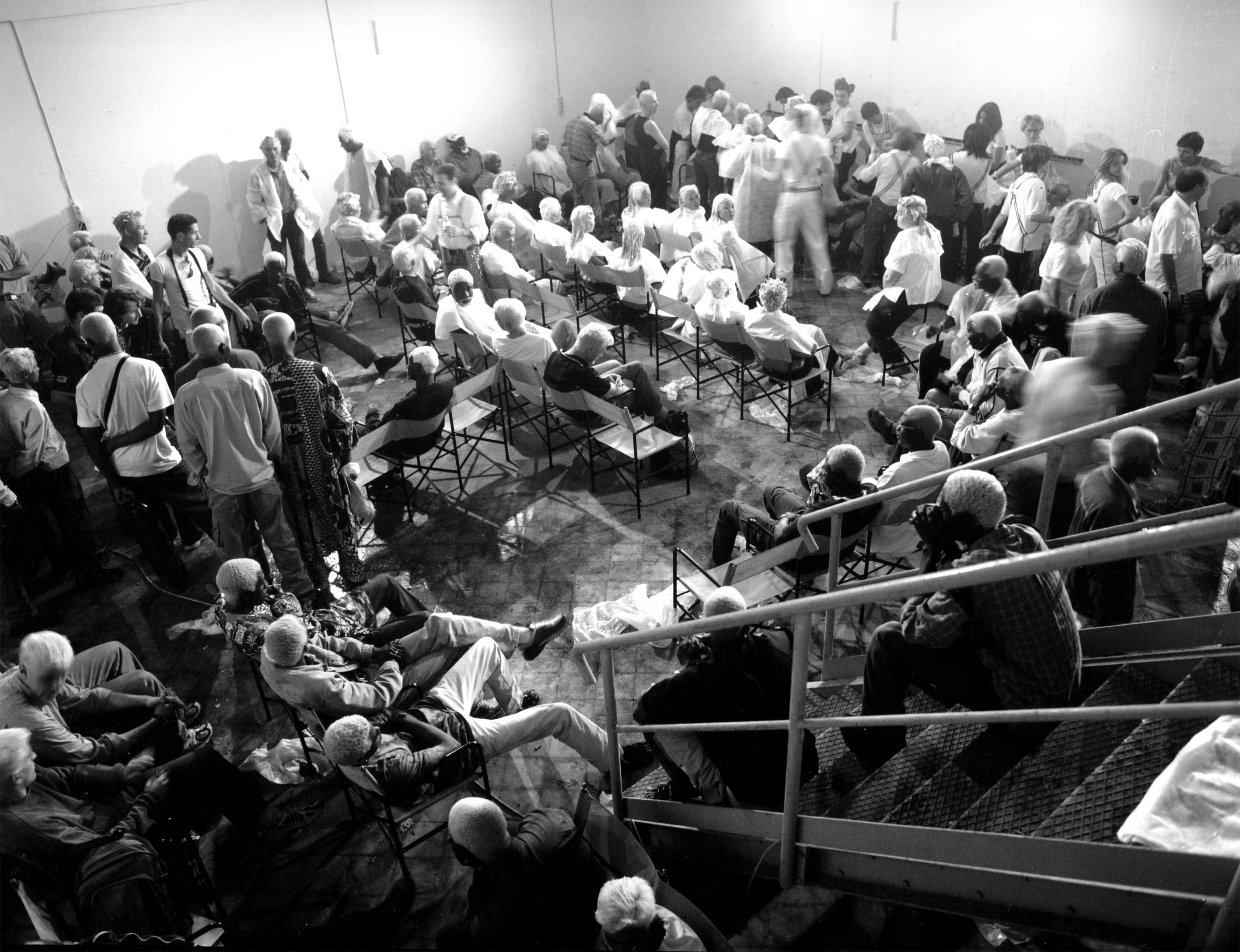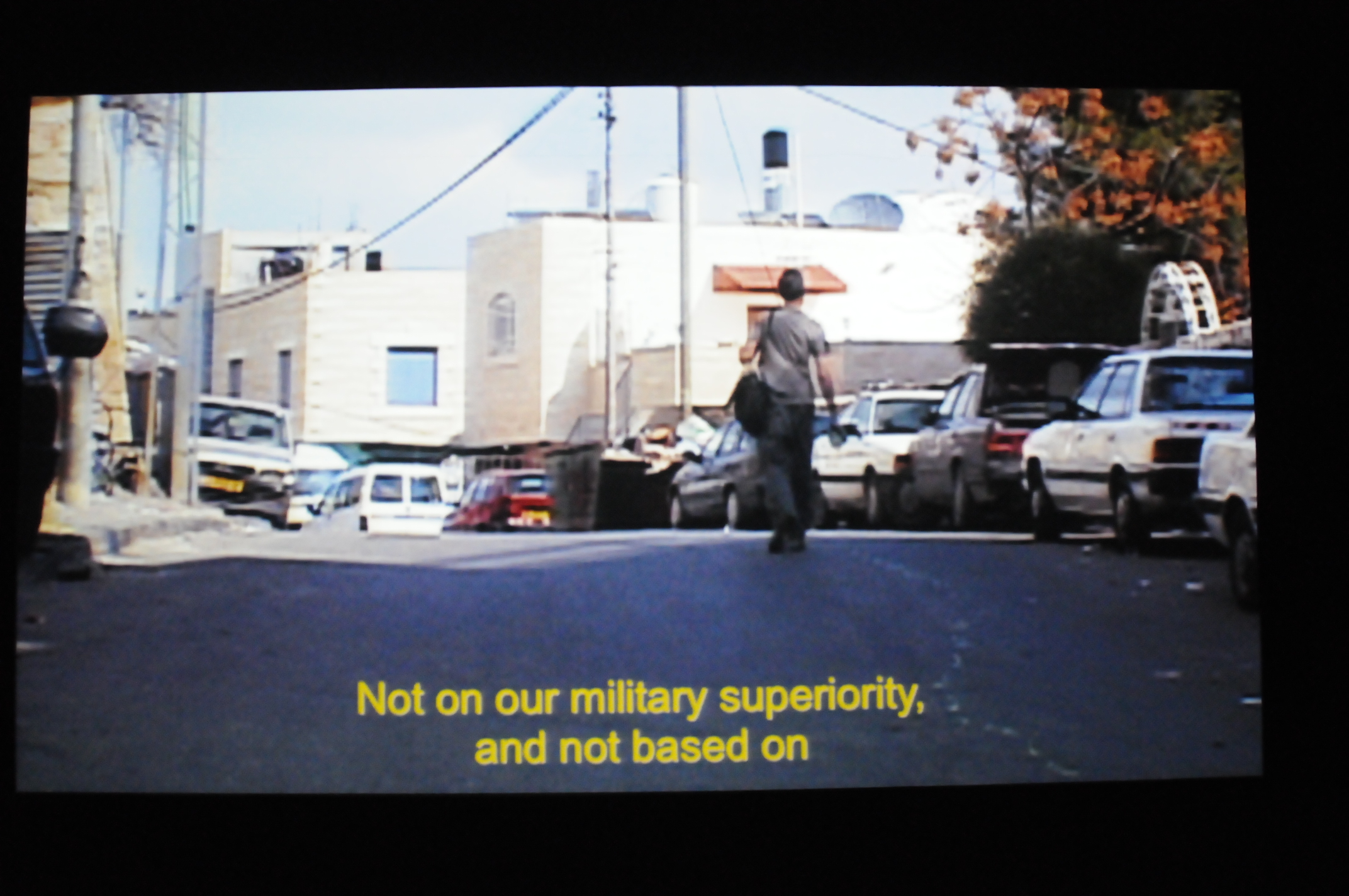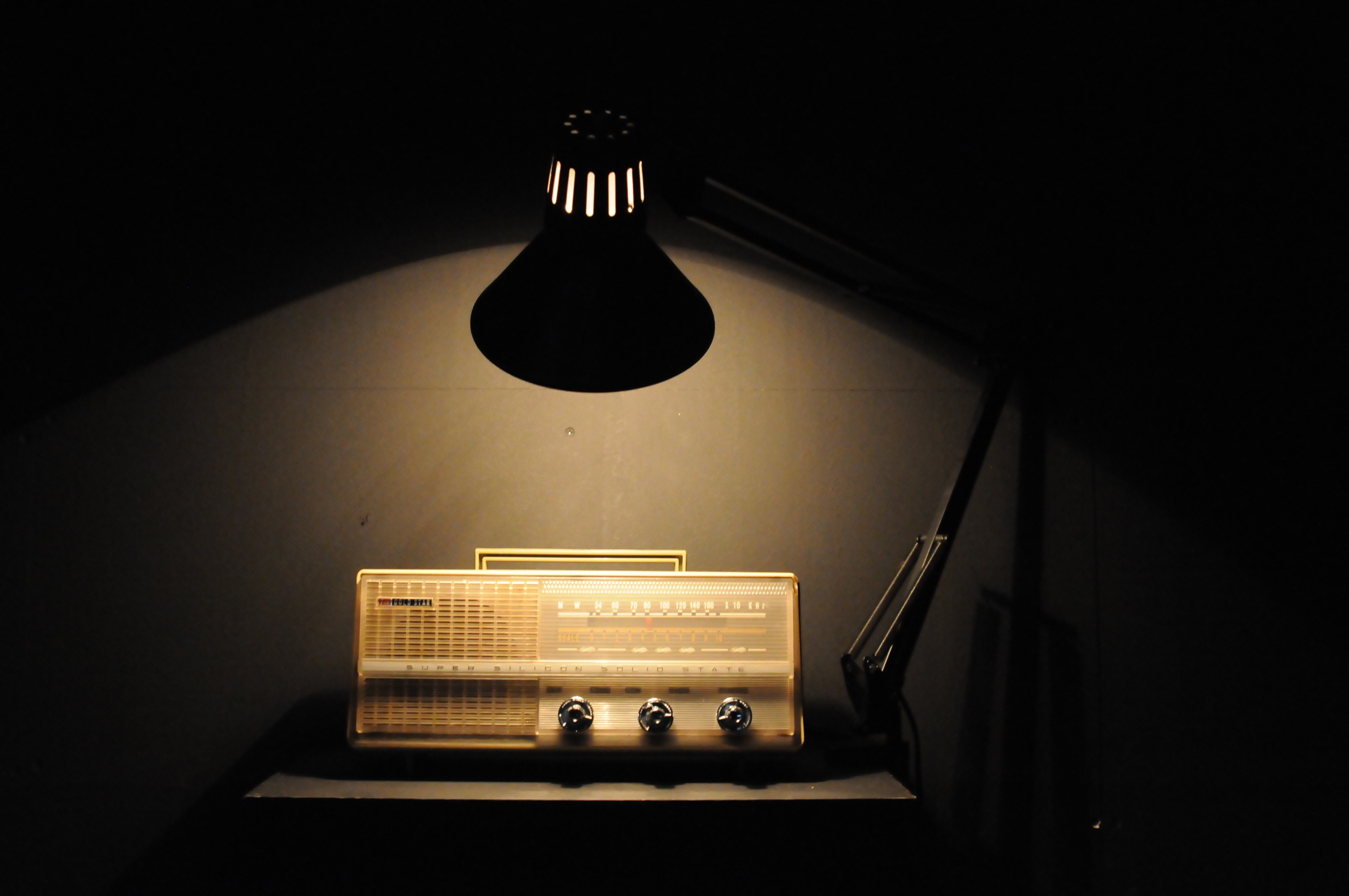There are some artists who pose political questions by drawing on repetitive actions in a highly charged field, but not advocating a certain political position or rallying cry. The artist gets into a community of emigrant workers, not to fight for solving a political problem right away, but to participate in their daily activities and organize a festival for them and to intervene in trivial and miscellaneous matters of their everyday life (mixrice); ordinary objects are put forth which seemingly appear mundane but turn out to be entangled in social tragedies (Sanghee Song); the artist adopts a peaceful performance carried out in ‘Green Line,’ a borderline area between Israel and Palestine (Francis Alÿs), or a non-intermittent filmic record of a labor camp in Afghanistan by a 100-meter camera track set up over the course of eleven days (Melik Ohanian); the artist’s strategies also include paying people for doing what the artist asks to do, in which native people learn Spanish, the language they do not understand, or foreign immigrants dye hair blonde, or participants incline and shore up a gallery wall (Santiago Sierra).
Dealing with political matters, other artists choose to disclose hierarchical orders without reservation or refer to notions of power metaphorically, in a situation that does not look political at all. The aforementioned artists relate to politics, while the following artists to the political. The parody of an educational television program demonstrates the artificiality of instruction and contemporary art (Beom Kim); the entrance walls collected from different exhibitions become the artist’s work itself (Soosung Lee); physical arrangements in the gallery space contribute to exposing social absurdities (Wan Lee); the video about conditions for perfect table manners, which is edited and fast-forwarded, lays bare the hyperbole of conventions (Ana Hušman); the oppressive effect of immigration interviews is acted out in the form of church mass (Nadia Kaabi-Linke). All these works are concerned with the preconceptions that are at work unconsciously in art institutions but hard to do away with, which are made to resurface, sometimes to become a travesty, in the works of these artists.
Whether it be the penetration into politics itself, or the micropolitics of making visible the invisible power, the above artists have it in common that their being political arises from the fidelity to sensory perception. It is expected that this exhibition will show how the kind of art that is not subordinate to politics could bring in a critical perspective on realities.

For over a decade, the artist duo mixrice, composed of Chulmo Yang and Jieun Jo, has been dealing with the issue of “migration,” which is a precipitous reality, or an ever more rapidly changing reality. However, they engage in neither impassioned fighting nor aggressive expressions of sympathy to resolve the problems that immigrant workers face. They have never argued that the everyday lives of immigrant workers are essentially the same as ours. Further, they make no attempt to read purity into the immigrant workers who immigrate because of the flow of capital, nor have they hid the feelings of disappointment that they felt during their projects with these workers. Nevertheless, despite their disappointment, they consistently return to the subject of “migration,” namely a number of issues connected to immigration. In their role as a mediator conveying a message from a minority community (that is unable to benefit from political authorities, yet also cannot escape from the shadow of political authorities) to the majority of society, mixrice may have run into the wall of reality. But despite the barriers that they face, their reason for not ceasing their work is by no means benevolent patience. Their energy is itself an art. For mixrice, whose art practice experiments with a diverse range of media (including photography, video, performance, cartoon, and mural), and is able to reveal the reality of immigration, accolades and praise straying from artistic value have no relation to them. mixrice demonstrates that the sustainable politics of the artist grows from art—not though slogans, but through artwork.
Beom Kim, Yellow Scream, 2012, oil on canvas, 86x 66cm, 2012, Collection of Maeil Dairies Co., Ltd.

Above all, this work is essentially an extension of a concept—the arbitrariness of information—that Beom Kim has frequently examined through education and media. Yet the arbitrariness here is relevant to the concept of arbitrariness in contemporary art. Indeed, from Expressionism to Kandinsky’s experiments regarding Color Psychology, artists have long striven to express their emotions through the use of colors. But contemporary art replaces those efforts with explanations comprised of words and concepts. As we can see the product of this performance hanging on the wall, there is no evidence on the canvas from which we can detect the feelings that the host claimed to have painted. The absurd seriousness of this work on the one hand makes a travesty of the words excessively overused in contemporary art; on the other hand, it allows us to peek into Beom Kim’s self-mocking view of artists’ desire to lead viewers to understand hard-to-understand artwork.

French artist Melik Ohanian simultaneously explores a continuous representation of space and a discontinuous representation of time. This video was shot over a period of 11 days at a Labor Camp in Sharjah, an emirate of the United Arab Emirates. During the course of the first day, Melik Ohanian built 100 meters of tracks and filmed approximately four minutes of traveling shots while passing over the tracks. The next day, he disassembled the tracks, moved them forward 100 meters, re-assembled them, and filmed again. He repeated this process for 11 days, shooting both during the day and at night. At a glance, the video appears to be a purely artistic, formal experiment. However, the members of this Labor Camp are largely immigrant workers facing low wages, grueling work conditions, and a disregard for human rights, usually in connection with large-scale art projects such as the construction of the Louvre Abu Dhabi. This work, which was produced at the request of the Sharjah Biennale, was denied screening at the Biennale due to somewhat hazy reasons, and ultimately could not be projected in normal way. The production’s backstory and the odd anecdotal parallel that the artist observed—the parallel between the rhythm of the production staff and the rhythm of the laborers—produce the image of an absurd reality explicitly revealing itself through the aesthetic formal experiment. The laborers’ image, in which they become the subject of the work and in which they are exploited for art institutions, distinctly illustrates the gap between the ideology of art and the reality of art institutions.

The individuals participating in this meaningless process are predominantly local people or immigrants who have been unable to adapt themselves to the economic system of the global age, and remain in society’s lowest class. Through this process, the contradiction in art reveals itself in the way that art, from its position in the middle of the capital, is extremely susceptible to its flow, but then holds itself out as having no connection to capital. Sierra predominantly conducted this type of project through art exhibitions funded by sizable investment, such as biennales and art fairs. Art pretends to be aloof of capital by willingly paying for the most unreasonable and unproductive of actions, but the more unreasonable and unproductive those actions are, the greater the crowds; and as such, art induces visitors to consume. Sierra points out this contradictory situation by way of actions that reflect the nature of the art system from its place within the global economic system.

“Green Line” refers to the interim demarcation lines set out in the 1949 Armistice Agreements between Israel and its neighbors following the 1948 Arab-Israeli War, and the name derives from the green ink used to mark the lines on the map while the talks were taking place. The artist walked for two days along the demarcation lines carrying a bottle that was leaking green paint. Following this performance, eleven individuals interviewed by the artist revealed contrasting opinions of the piece. The artist questions what kind of meaning his quiet and poetic gesture can have in the strained atmosphere of an internationally disputed area. The process by which the artist chose this area and drew the green line again causes us to look back at the historical irony that a random decision made at a table could cause such massive bloodshed, and causes us to recall the reality of the ongoing dispute in the region. But most of all, the strongest thing is a firmness created by his movements that, although his thin frame is bent and lacks aggression, breaks through the extreme tension. It is knocking on the wall of political reality with the firmness of a poem’s words. Speaking as if Zapatista Subcomandante Marcos said, “Francis, your action is our weapon.”

is a scale balancing a small cement lump (taken from a demolished building) and a black plastic bag with unidentifiable contents. Lee creates an arrangement where the weights on both ends of the scale—the weight of a substantive trace of time, represented by the cement lump, and the weight of the plastic bag’s uncertain contents—are balanced. However, because the center of the scale—is the key to balancing—is obscured, nobody can be sure whether both sides are exactly counterpoised, or whether they have been artificially manipulated by other forces. Sitting atop the scale is a stuffed pheasant, whose atrophied wings reflect its adaptation to living on land during its lifetime.















